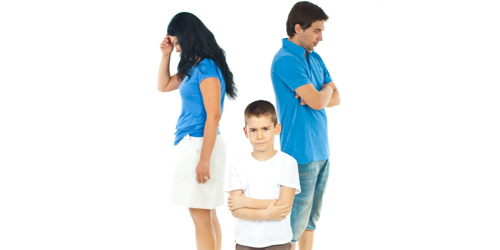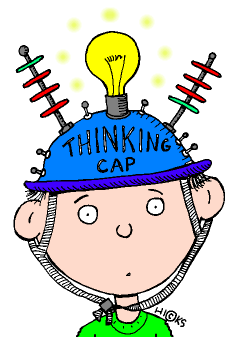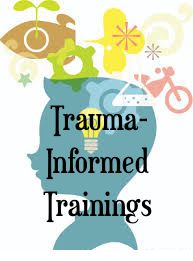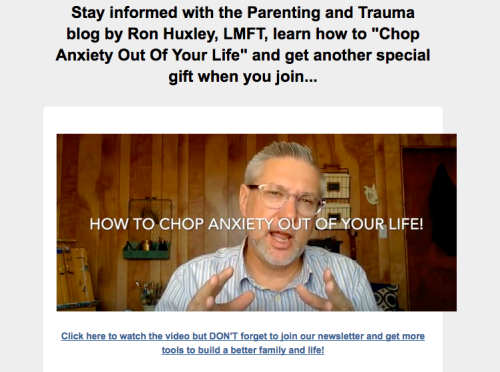Increase Your Child’s Emotional IQ
Emotional Intelligence is one of the most important attributes of success at home and school (and later in life, in business). This is because EQ is about being self-aware and socially sophisticated. The better children are at understanding and managing the world of emotion and social interactions, the better they will be at controlling anxiety.
Another way of looking at EQ is to say that “emotional intelligence is being able to feel an emotion without having to act on it.”
Emotional IQ Training
Howard Gardner, a psychologist at the Harvard School of Education, has suggested that there are many different types of intelligence, not just academic (linguistic and math) ones. He refers to these as talents that all children possess, male or female. Being able to use these talents is what makes people successful and satisfied in life.
Peter Salovey, another psychologist, refines Gardner’s talents into five main domains of emotional intelligence:
- Knowing one’s emotions
- Managing emotions
- Motivating oneself
- Recognizing emotions in others
- and Handling relationships.
In order to help boy and girls develop all of these areas of emotional intelligence and use it to cope with stress and anxiety, we have to intentionally implement “learning opportunities” into their daily lives. The more skills that we provide our children in understanding their emotions, recognizing stress, and feeling confident to manage it, the more adept our children will be in finding freedom from fears and anxiety. It is the avoidance or lack of confidence emotionally that causes anxiety to be so intimidating.
Gender Differences In Emotional Intelligence
FACT: Girls are 2x as likely to develop anxiety than boys.
FACT: Boys use aggression to express most of their emotions.
Research has shown that girls develop language skills much sooner than boys and are more articulate when it comes to expressing themselves emotionally. This natural advantage and the de-emphasis on emotional training for boys, lead males to communicate their emotions behaviorally. This may be why so many boys get into fights, play competitive sports, or act aggressively towards others. It is their way of communicating their feelings. And anger is the socially acceptable spokesperson for all of those feelings, be they positive or negative.
Why, in our modern society, do we continue to see this pattern of emotional deficiency in boys? Is it simply a matter of biology and not something that we can control. Although nature is a significant part of personality and social/emotional development, I don’t believe that is the answer.
In most societies around the globe, girls receive more “training” on how to process a full range of emotions that do boys. Research proves that biological is not as powerful a reason for this as you might think. A lot has to do with nurture and modeling.
Research and common sense suggest that we give our sons undivided attention every day. This means full attention, not partial or half. Don’t engage in cooking, cleaning, reading or anything else that might detract from the attention given. Playing a game or working on a project, side-by-side, with minimal words is enough. Jerrold Lee Shapiro, Ph.D., in his book, The Measure of a Man: Becoming the Father You Wish Your Father Had Been, states that while men and women experience emotions similarly, they may share those emotions differently. Men, due to past Emotional IQ training, are used to indirectly communicating with one another. This is what, Dr. Shapiro calls “side-by-side” or “shoulder-to-shoulder” communication. Moms tend to prefer the more “face-to-face”, direct approach.
Dr. Shapiro talks about the different styles of communicating emotions by men and women: “Men have long been criticized for either having no feelings or having the wrong ones, or being unable to describe them. It is true that males in our society are trained to deny, ignore, cover up, and rise above feelings. However, we do have them all the time. It is important that we express our feelings to our children in male ways. It is customary for men to be most open, for example, while they are working on a joint project together (i.e., shoulder to shoulder).”
It is also important that mom’s and dads encourage boys to express the full range of emotions. Past social conditioning that only some emotions, namely anger, are acceptable need to be removed. All emotions are valid. Be receptive to a baby’s sadness and discomfort as well as his cooing and giggles. Ask toddlers and school-age boys if they are feeling sad or tired and empathize with those feelings. Tell older boys that it is normal to feel awkward or anxious and have open discussions about his relationships with girls, other boys, siblings, teachers, and family.
When boys do express themselves aggressively or act rambunctious, look below the anger. While it is true that boys, on the average, do play more aggressively, don’t let that prevent you from checking for underlying emotions of sadness or anxiety. Remember that acting out means just that. Boys often act out their feelings of hurt and loss. Labels those feelings for them if they are obvious or ask them about their feelings if they are not. Reflect on their behavior by stating, “You seem to be upset about this situation. I wonder if you are feelings hurt/sad/anxious by it.” Model complex feelings by admitting you often get angry when you feel these other emotions too. It is often difficult for young children to understand that people can have more than one emotion at a time.
Be willing to express your love and empathy openly and generously. Loving your son will not “baby” him, “spoil” him, or make him a “sissy.” It will make him more self-assured, confident, and secure. When a dad is openly affectionate toward his son, a very deep message about manhood and emotions is communicated. Tell your son that you love him as much as you wish. Give him hugs and take opportunities to play with him.
This still begs the question as to why girls are more likely to be anxious than boys. Aren’t they more socially trained to express feelings? Yes, but boys have one advantage over girls in this area…They tend to externalize their feelings whereas girls internalize it more. This results in girls being more anxious about their bodies, negatively affected by social ostracism, inadequate, sad and lonely.
Mental health data supports that girls are more like to miss school due to overwhelming feelings of sadness and contemplate suicide and/or engage in self-harm behaviors when situations feel more emotionally overwhelming. Helping them develop their EQ will be a powerful deterrent to these risk factors.
Expectations, Pressure, and Failure
There is a high correlation between children’s anxiety and parents high expectations. Parents want the best for their children but sometimes this can translate into unnecessary pressure on the child. Children who are pressured to perform and made to feel guilty or ashamed at not being the best are most likely to develop anxiety disorders. Parents need to take a look at themselves and their own drives to be perfect, look good to others, and issues around failure. They may be projecting their own “junk” onto their children.
High expectations can lead to children making irrational conclusions about their failures. A child might state that “I failed my math test because I am dumb. I will always be dumb and I will never do well in math.” Parents need to be empathic when they hear these types of statements. Don’t criticise them for the irrationality. Help them redirect their perspectives with positive statements, such as: “You failed the test because it was a very hard test and you didn’t have much study time. You will do well next time and we will work on it together.”
EQ is NOT Innate
When children are born, they have neurons but no connections and so everything can feel stressful. The connections are created through experiences with parents and peers. Over time, through many, many experiences, children develop the skills they need to understand themselves and the social-emotional world around them. Allow them the safety to go through this process of trial and error. Be a coach to them as they learn. Don’t be too quick to tell them how to do something, manage friendship quarrels, or find solutions to frustrating situations.

Name Them to Tame Them
The best Emotional IQ strategies are the simplest. Putting names to feelings helps children communicate and master them. Fears and anxiety can appear so large and overwhelming that children don’t know how to cope. Giving them a name makes seem smaller and more manageable.
Parents can say “Anxiety wants to make you have a bad day and tell you that you can’t remember anything when you take a test. He’s such a pest, isn’t he?”
“It is very frustrating when your brother won’t share his video game with you.”
“Worry wants us to argue in the car about getting to school on time but let’s listen to the music instead.”
“When you get afraid, it makes your heart beat fast. Feel it? Good thing we can use our breathing exercises to slow it down. Let’s do it together.”
Using imaginative labels for anxiety and its entourage of characters (worry, fear, panic, frustration, perfectionism) helps children externalize their emotions and have more confidence to control them(selves).
Naming emotions are centered in the left hemisphere of the brain in a small region called Brocas Area. Our right hemisphere lacks the verbal labeling of the left but is able to process images and bodily sensations that go along with feelings. Naming our fears allows both hemispheres of the brain to work together. Strong emotions, like anxiety, panic and phobias will hijack the thinking brain as a protective function to real or perceived danger. Using words to describe them puts the thinking brain back in charge and sends signals to the body to be calm and peaceful.
Once a child learns to name their own emotions, they can better recognize emotions in others. This makes them skilled at handling anxiety, feeling confident, and being socially competent. A great combination!

EQ Habits for the home
Parents and children can use some simple habits to improve EQ and decrease anxiety:
1. Use a diary to describe one emotional experience per day.
2. Do “emotional weather” check-ins every morning to be more aware of our feelings states.
3. Practice identifying emotions in others nonverbal behavior and make a scavenger list of feelings to see how many you can spot per day.
4. Watch movies and call out the feelings spotted in others on the screen.
5. Write a list of negative feelings and then write down their opposites. Pick one positive and have a family plan to experience that through outings, research, etc.
6. Use dramatic play to act out feelings in puppets, artwork, music, poetry, dance/movement, character voices, fictional stories.

Where do we start?
The most natural place is the home. And the most natural person is a mom or dad. We need to be more conscious about what and how we are teaching emotional literacy to our children. Handling any and all emotions make us better equipped to tackle anxiety. Don’t sit passively by and wait till there is a big issue. Go after it now! If anxiety has already become a big problem, you can use Emotional IQ skills to uproot anxiety and build new, more adaptable reactions instead.










